These are the tile types you can use outdoors – plus those you can't – according to an expert
All the options for gorgeous garden paving
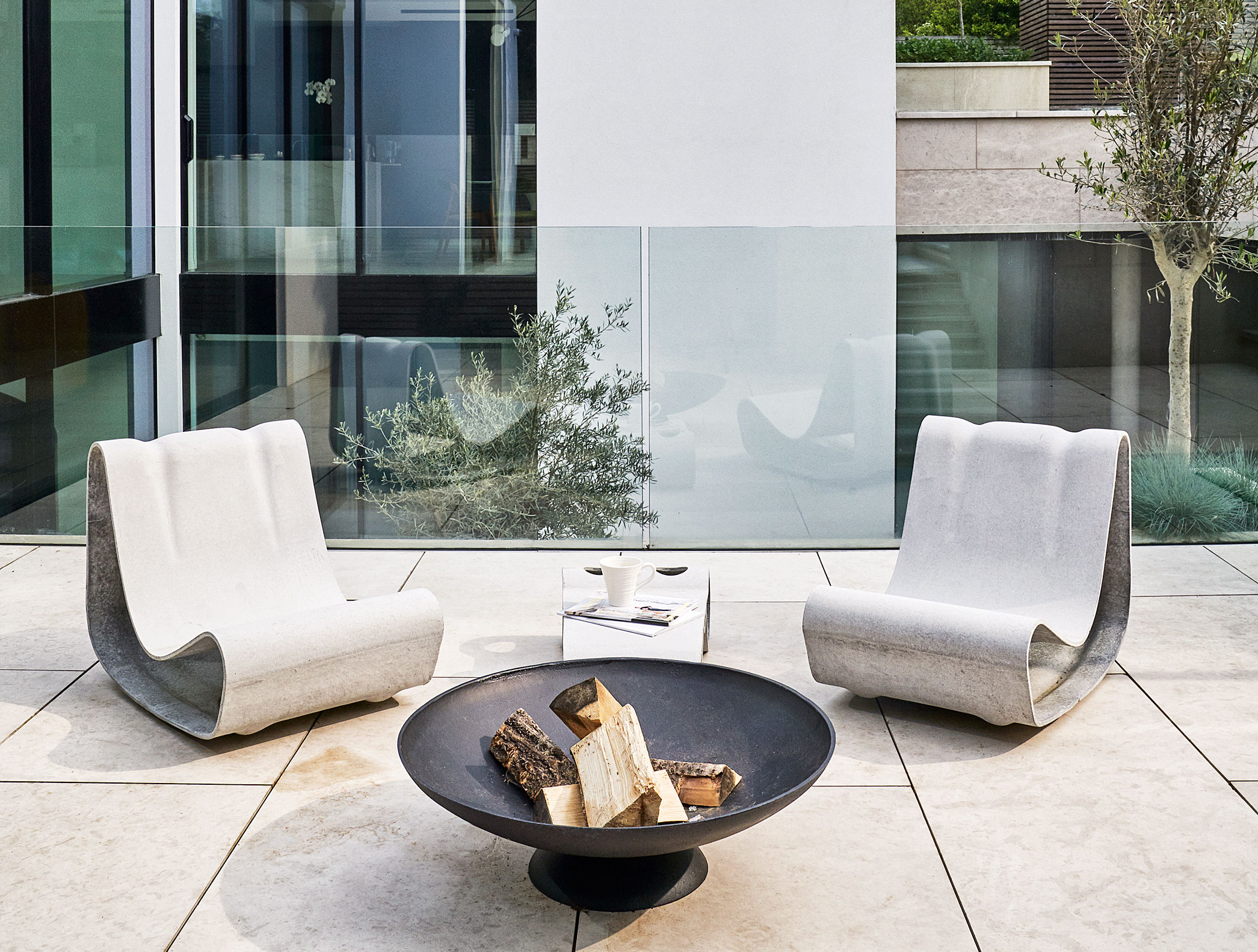

Whichever style a back yard has, from the crisp clean lines typical of a contemporary design to the abundant planting and meandering pathways of a cottage-style plot, or anything in between, outdoor tile that complements its style is a vital part of the landscaping.
Of course, outdoor tile has a lot more to stand up to than those you would lay in an interior, with extremes of temperature to cope with along with the action of the weather. Opt for the wrong type of tile and damage can occur and their looks can be spoiled.
See: Garden patio ideas – for a welcoming outdoor living space
So, which types of outdoor tile can be used for the exterior of your home that will prove hard wearing, safe underfoot, and lastingly handsome?
Expert Hamish Smith, Creative Director at Ca’ Pietra, shared with us the essentials on choosing exterior tile and tile maintenance.
Read on to find out about porcelain, natural stone and patterned tile to create fabulous terraces, patios, seating and dining zones in the garden.
1. Choose outdoor porcelain tile
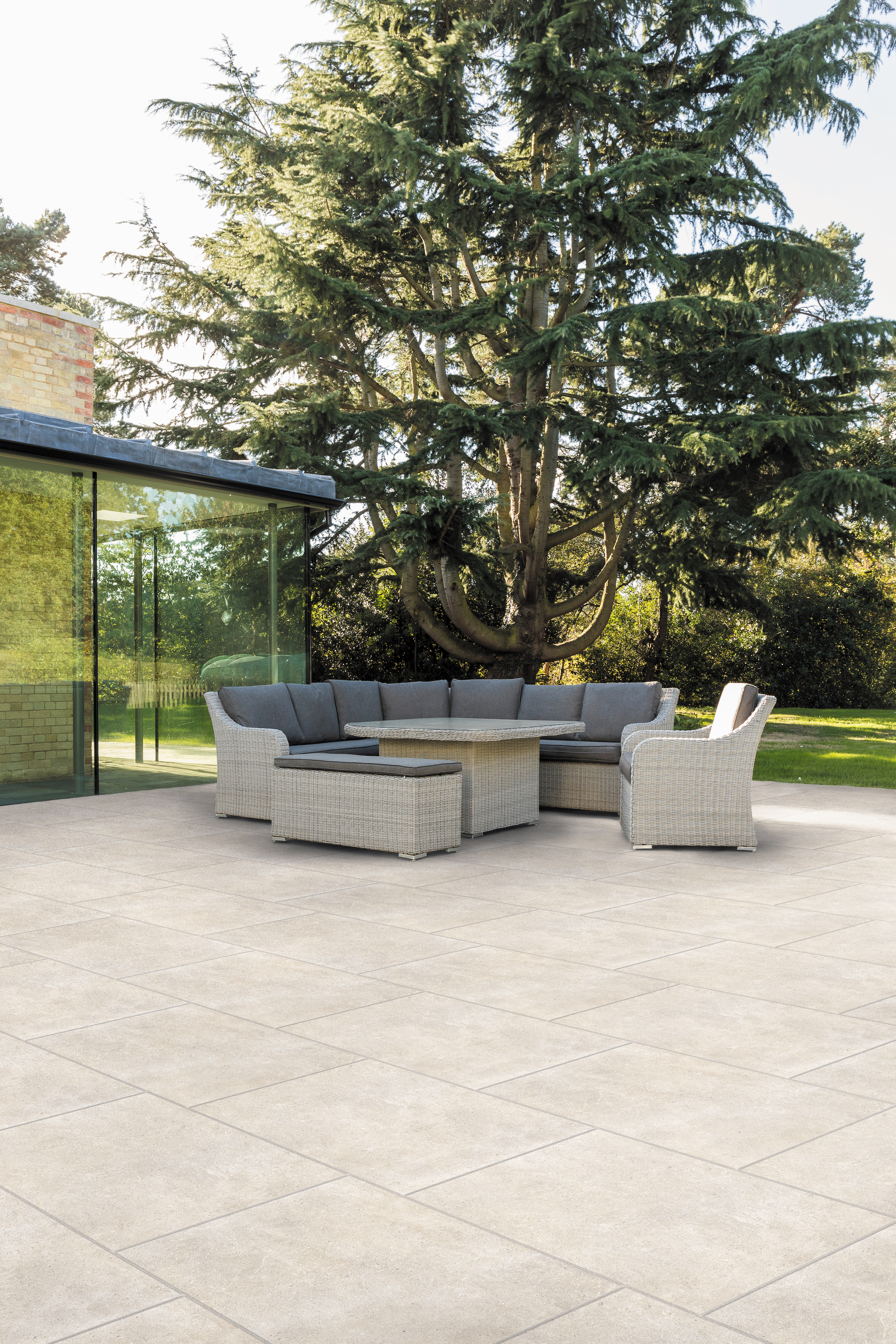
Just as porcelain can be a hard-wearing and beautiful choice for an interior floor, so it is for the garden.
Sign up to the Homes & Gardens newsletter
Design expertise in your inbox – from inspiring decorating ideas and beautiful celebrity homes to practical gardening advice and shopping round-ups.
‘Porcelain is one of the unsuspected tile materials that can live outdoors just as happily as it does in kitchens and bathrooms,’ says Hamish.
Porcelain tiles don’t absorb water and therefore aren’t in danger of cracking when there’s a frost, which makes them ideal for the garden.
One of the biggest advantages of opting for porcelain exterior tiles is that they’re low maintenance. ‘They’ll stay looking as good as new with very little TLC,’ says Hamish. Sweeping up debris plus washing them down with a suitable cleaning solution from time to time is sufficient.
Porcelain can replicate the appearance of natural stone so taking advantage of the easy care finish need not mean compromising on the preferred look.
Outdoor porcelain tile can warm up if in direct sunlight, so choose a pale finish that reflects light rather than a dark one that absorbs it for sunny spots.
2. Use outdoor tile to create an inside-outside link
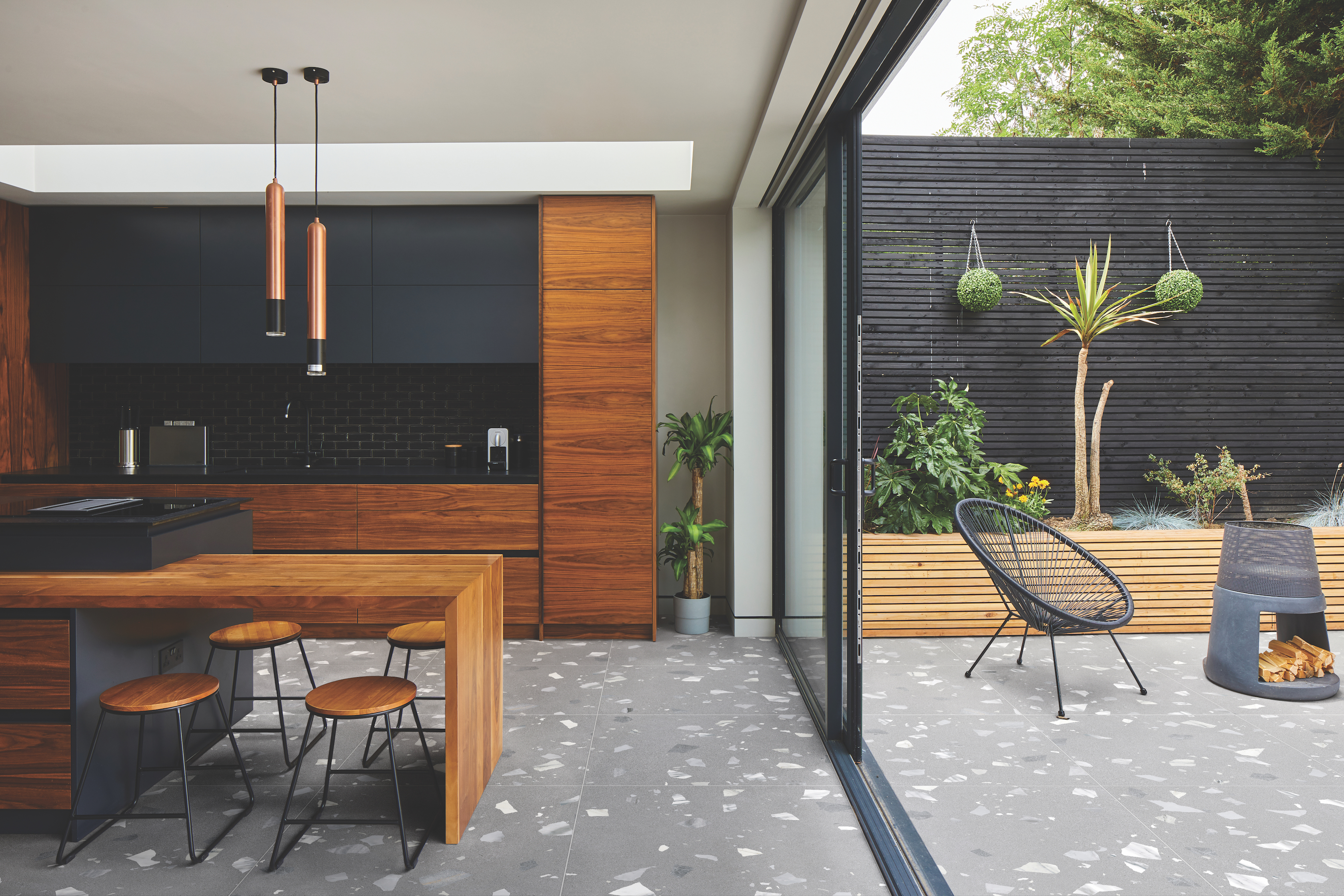
Porcelain is a brilliant choice if you want a floor that leads from the interior of your home to the terrace outside. Using porcelain tiles in a kitchen-diner with sliding, bifold, or industrial-style exterior doors or classical French windows as well as directly outside on the patio has a space-expanding effect.
Look for internal porcelain tile ranges that also feature an external option or are specified for both environments. ‘It allows a tile to run from the inside-out to create a really seamless look,’ says Hamish.
Outdoor porcelain tiles are often thicker than their interior counterparts and they can have a more textured finish to offer slip resistance in the conditions. Bottom line? Any porcelain you choose must be specified for exterior use.
3. Use outdoor tile to pattern
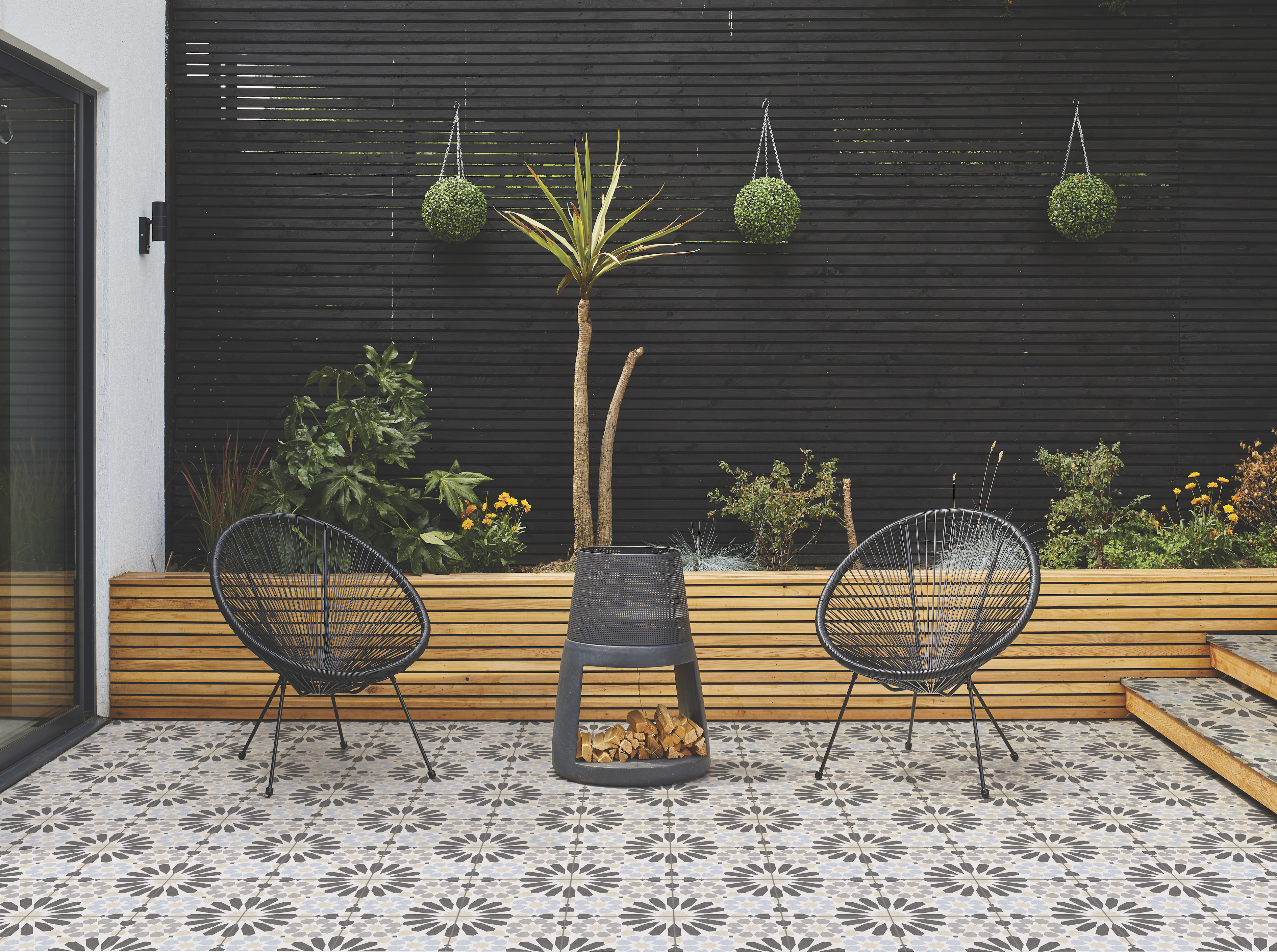
Creating pattern underfoot with tile is not just a possibility for inside a home. ‘You can get patterned porcelain tiles to jazz up sections of your garden,’ says Hamish.
Geometric pattern looks fabulous laid on terraces, and in outdoor living and dining spaces, and can be a striking way to distinguish different garden zones.
4. Fall for outdoor stone tiles
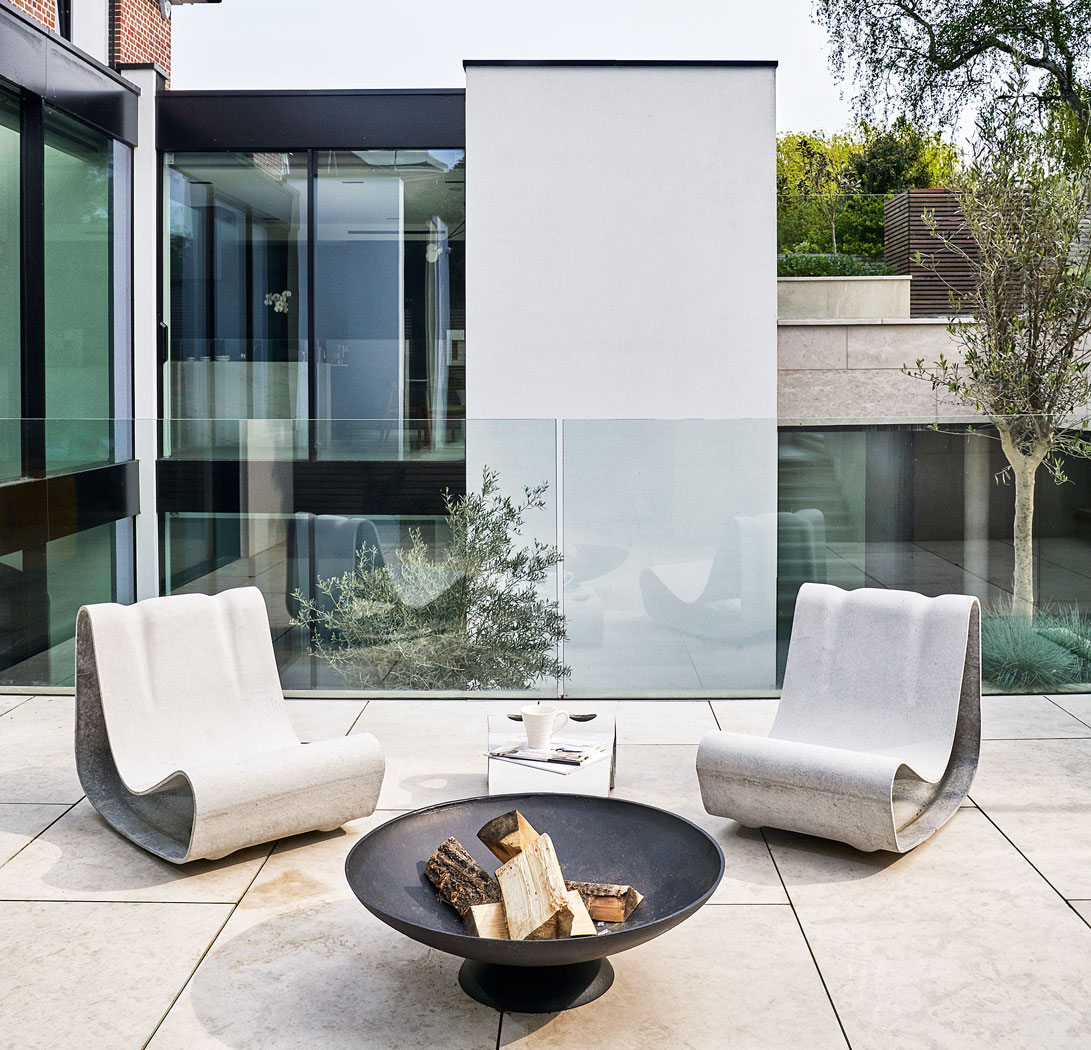
There is a large choice of stone tile that can be used for patios and terraces, as well as pathways and courtyards, including limestone, sandstone and slate. As for an interior, they offer the uniqueness that comes with choosing a natural material.
Consider carefully the color of natural stone chosen for the exterior of your home. ‘Although it’s down to personal preference, it’s really important to consider your lifestyle when picking the shade of natural stone,’ says Hamish. ‘Personally, I’d opt for a limestone that’s not too white to avoid getting reflections from the stone. I would also look at a tumbled finish to have that characterful look.’
Not all natural stones are equal, however. Only choose stone that is specified for exteriors. ‘Just like you would with porcelain, make sure that the stone you have selected is frost-resistant and has adequate slip-resistance,’ says Hamish.
The golden rule with natural stone is the same as that with porcelain. ‘Avoid anything not recommended by your supplier for external use, regardless of how much you love it,’ says Hamish.
Stone needs a particular approach when it is the chosen tile for outdoors. ‘When laying natural stone it is important to mix tiles from the different boxes or crates you receive to ensure a tonal blend across the surface of the stone when laid,’ explains Hamish.
5. Cleaning outdoor tile
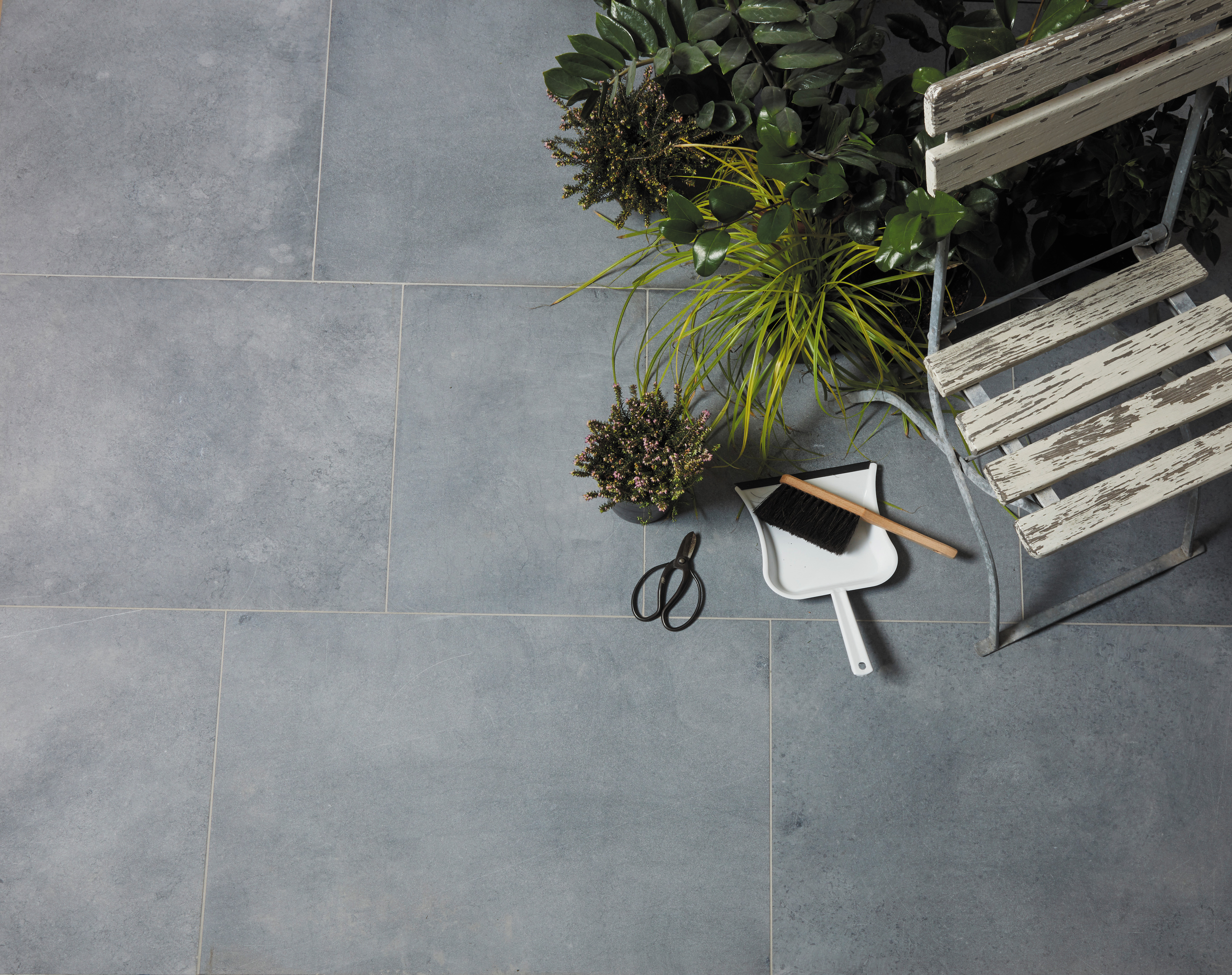
Stone also has other installation and care requirements, which are vital to know so that it retains its beauty.
‘For all natural stone you must ensure that tiles are sealed pre and after grouting,’ says Hamish. ‘We recommend using a water-based impregnating sealer which works across natural stone in outside environments. With natural stone we would recommend topping up the sealant once a year.’
Porcelain, on the other hand, does not need to be sealed.
What type of tile is not recommended for outdoor use?
Outdoor ceramic tile is not recommended for outdoor use because it is not a strong enough material to withstand the effects of weather – it absorbs water and will therefore be prone to cracking and mould.

Sarah is a freelance journalist and editor. Previously executive editor of Ideal Home, she’s specialized in interiors, property and gardens for over 20 years, and covers interior design, house design, gardens, and cleaning and organizing a home for Homes & Gardens. She’s written for websites, including Houzz, Channel 4’s flagship website, 4Homes, and Future’s T3; national newspapers, including The Guardian; and magazines including Future’s Country Homes & Interiors, Homebuilding & Renovating, Period Living, and Style at Home, as well as House Beautiful, Good Homes, Grand Designs, Homes & Antiques, LandLove and The English Home among others. It’s no big surprise that she likes to put what she writes about into practice, and is a serial house renovator.
-
 How to clean a patio – 6 different methods, and when you must use a chemical cleaning agent
How to clean a patio – 6 different methods, and when you must use a chemical cleaning agentFrom manual scrubbing, natural solutions or calling in the pros, industry experts reveal the benefits and considerations of each method
By Andy van Terheyden Published
-
 Kris Jenner's favorite air fryer, the Ninja Crispi, is the perfect small kitchen solution – it deserves a place on the most compact of countertops
Kris Jenner's favorite air fryer, the Ninja Crispi, is the perfect small kitchen solution – it deserves a place on the most compact of countertopsKris approves of this compact yet powerful air fryer, and so do our own kitchen appliance experts, praising it for its multifunctionality
By Hannah Ziegler Published